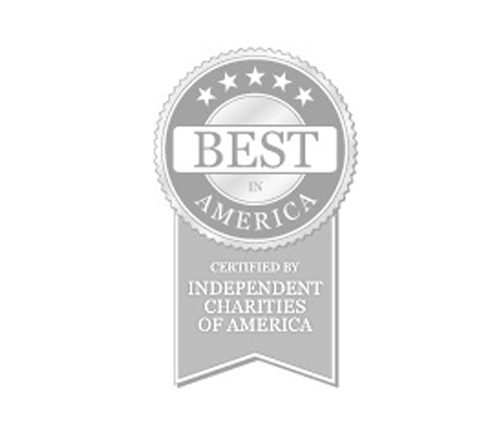In the 2013 focus groups, NRCA held with 11 states, participants clearly saw the importance of leveraging public and private assets and acknowledged the art in learning how to effectively leverage these assets. Solving the adaptive problems of resource supports for the growing number of adoptive/guardianship families cannot be solely solved by technical solutions such as new money or programs. The focus groups NRCA held clearly demonstrated the need for strong executive leadership, meaningful private and public sector partnerships, broad engagement of parents and providers, and a commitment to shared measurement and continuous learning.
Components of a network approach in community discovery have been formulated by LaPiana Consulting. The firm has identified trends impacting the social sector (Campos, Gowdy, Hildebrand, & LaPiana, 2009). Leaders in post-adoption systems can accomplish the following per LaPiana Consulting:
- Expand their reach and deepen their impact through networks and coalitions of both organizations and individuals.
- Use network mapping tools to understand, strengthen and grow such networks on a continuous basis.
- Think more systemically about the challenges they seek to address, and about possible approaches and partners.
- Organize the work as a collaborative, evolving process, rather than as something they can completely control internally.
Innovation is sometimes thought of as disruption and doing away with the old and obsolete. But Goldsmith (2010) formulates the concept of innovation as a “catalytic ingredient” (p. 27). Goldsmith (2010) has supported this theoretical framework as one that he describes as “discovering the missing ingredient” (p. 30). His framework for “discovering the missing ingredient” is constructed as follows:
- Civic Discovery: Survey the institutional assets in the community. Use mapping as an opportunity to build rapport with local leaders.
- System Discovery: Explore the relationships of stakeholders such as competition, diversity, and opportunity for success and innovation.
- Personal Discovery: Listen and look for new ideas and interventions.
- Predictive Discovery: Utilize models to discern solutions based on data.
One of the best examples of leadership of “discovering the missing ingredient” is the work done in Utah by Marty Shannon, the State Adoption Program Administrator. Starting in 2001, when she was part of a research project with Susan Culter Egbert, Ph.D. then with the University of Utah, School of Social Work Social Research Institute. Ms. Shannon began her discovery process in conjunction Doctor Egbert by wanting to know more about what adoptive families needed to be stable. Doctor Egbert’s research included sending surveys to all DCFS adoptive families. Ms. Shannon focused on the engagement of key stakeholders. She held town meetings for awareness and particularly engaged mental health providers on the dynamics of adoptive family issues that included the parents and siblings, trauma-informed care, and opportunities to access Medicaid.
Despite the vastness of the state, she went to every county and did her own “inventory assessment” with other research partners. As noted, parents and families “had no idea where to call or go” for various activities that could support post-adoption activities. Ultimately, a report was issued and customized for every county on the inventory. For the first time, dialogue was occurring around mental health, substance abuse, fetal alcohol syndrome, crisis support, and support groups among providers and parents.
Today, this new ecosystem is supported by specialized adoption “clusters” that are facilitated by parents who receive a modest stipend provide by the Utah Foster care Foundation. Parents can also engaged online, both in social media and webinars, with support by the backbone organization of The Adoption Exchange. Parent leaders are engaged and represented in all of the 41 school districts. The Adoption Exchange updates post-adoption resources and activities along with success stories. With over 6,000 children in adoption assistance program, Utah has been innovative in the creation of a meaningful and research-based discovery process. Essentially, Utah has found the missing ingredient by surveying, exploring, and listening to parents and those who supported them.
In Vermont, this discovery process was initiated primarily by families struggling to parent children with challenging behaviors who were running into navigation issues with county and state systems. Several of these families had adopted children from bordering states and sought help from Casey Family Services. Simultaneously, a group of families who had provided foster care through the Futures Program and went on to adopt the children were experiencing similar struggles. These families were clustered in the North East Kingdom, which is a very rural section of Vermont. The director of the Futures Program contacted the adoption specialist and together they developed two local support groups and a lending library. As adoption disruptions occurred with high-risk youth, no one knew the right approach or how to respond. Mental health services were not bundled in a manner that could support families and only the state’s mental health department could place children not in custody into residential facilities. Parents and state leaders began to understand the importance of “lifetime” adoption activities and “cross pollination” activities. As such, a membership-driven consortium was formed with the following mission statement:
“The Vermont Adoption Consortium recognizes that adoption is a lifelong process with rewards and challenges at different stages along the way. Therefore, we are committed to partnering with individuals, families and communities to further the knowledge and understanding of adoption and to ensure that all people whose lives have been touched by adoption have access to quality services throughout Vermont.”
The creative new backbone consortium began meeting in 1995. At that time, there was an emerging recognition of the on-going needs of adoptive families. As such, a grant was developed and appropriately called the Lifetime Adoption Program (LAP). Writing a grant proposal helped to formulate a plan for developing post adoption services and formalized the relationship between the partners in what has become the Vermont Post-Adoption Consortium. The original members were the Vermont Department for Children and Families (applicant for the grant), Casey Family Services, Vermont Children’s Aid Society (private adoption agency that administered the first grant), Northeast Kingdom Human Services (then called Futures), Easter Seals (then called Teaching Family Center) and several families. In 1997 this group applied for a second adoption opportunity grant this time with Casey Family Services as the applicant. This grant solidified the group’s commitment to this work and the Vermont Post Adoption Consortium was born.
The Vermont Post Adoption Consortium (as it is known today) started with in-home parental support and education on parenting children with challenging behaviors. Support groups focusing on parenting strategies and options for respite care were established. Through the Consortium, membership agencies came together to develop year-round adventure weekends for youth and a summer day camp called Camp For Me. This gave parents a break and provided a safe, structured and fun outlet for the children. The Consortium engaged with the Department of Mental Health and the Department of Education to learn how to assist families in navigating those systems. In addition, the Consortium has been instrumental in Vermont moving knowledge forward in areas of adjusted child development based on trauma and adoption. The concept of institutionalizing the Consortium as a backbone organization was paramount. Since inception, both Casey Family Services and Children’s Aid Society closed their operations, but others have stayed involved and new member have been added. Today, this grant has been augmented by four contracts with members of the consortium that provide a wide array of services from pre-adoption onward. Families adopting or becoming permanent guardians for children in foster care can begin working with a post-permanency support worker in the months prior to the final court action. In 2013, the state had 1,800 children in adoption assistance agreements, of which half were older than 13. On average the state compiles about 170 adoption/guardianships per year.

